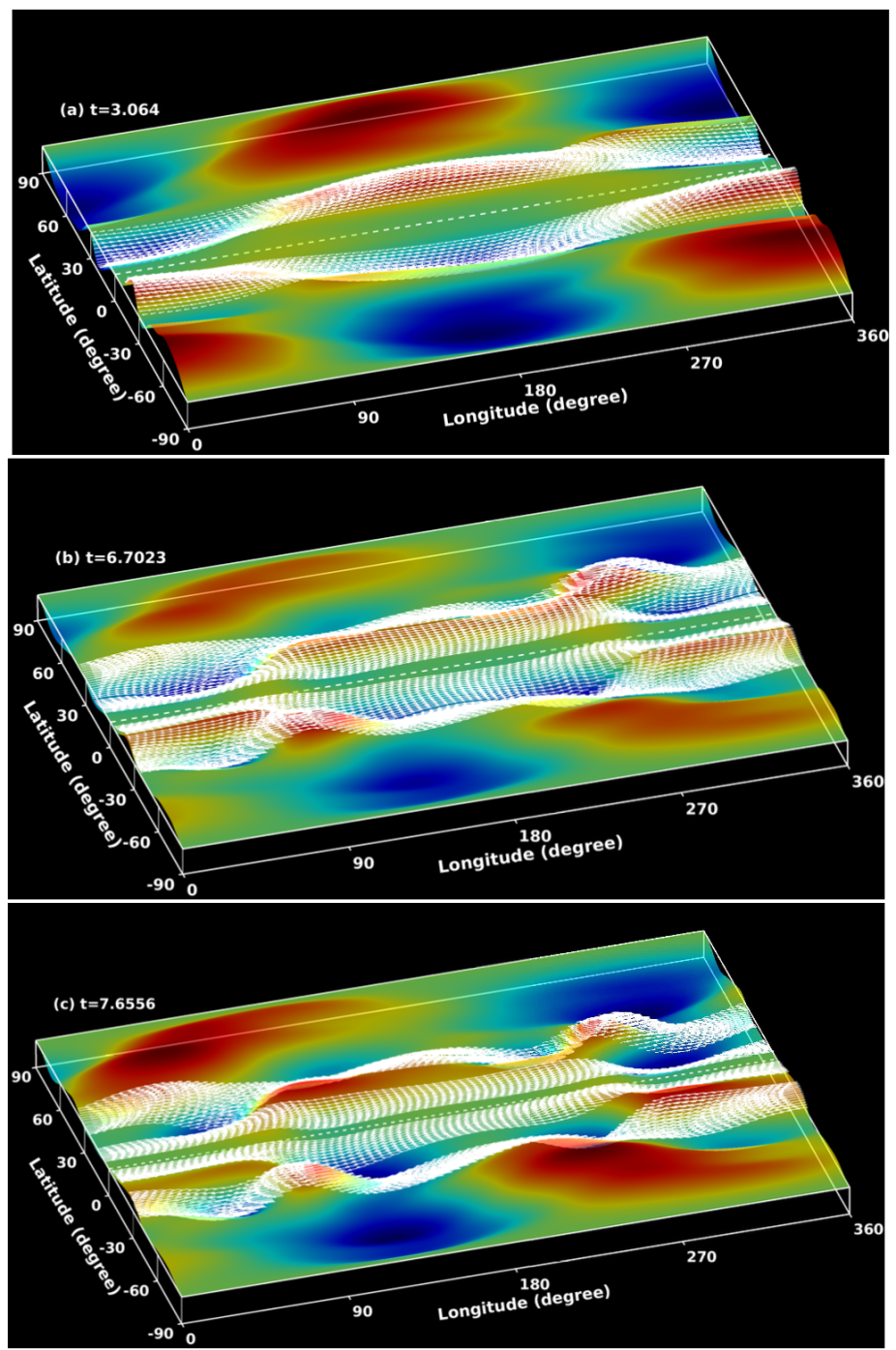Publication: Astrophysical Journal; First HAO Author: Mausumi Dikpati; Authors as listed in article: Mausumi Dikpati, Aimee A. Norton, Scott W. McIntosh, Peter A. Gilman
We explore the fundamental physics of narrow toroidal rings during their nonlinear magnetohydrodynamic evolution at tachocline depths. Using a shallow-water model, we simulate the nonlinear evolution of spot-producing toroidal rings of 6-degree latitudinal width and peak field of 15 kG. We find that the rings split; the split-time depends on the latitude of each ring. Ring-splitting occurs fastest, within a few weeks, at latitudes 20–25°. Rossby waves work as perturbations to drive instability of spot-producing toroidal rings; the ring-split is caused by the 'mixed stress' or cross correlations of perturbation velocities and magnetic fields, which carries magnetic energy and flux from the ring-peak to its shoulders, leading to the ring-split. The two split-rings migrate away from each other, the high latitude counterpart slipping poleward faster, due to migrating mixed stress and magnetic curvature stress. Broader toroidal bands do not split.

Snapshots during splitting of a 6-degree toroidal ring into two, overlaid in white arrow-vectors on the colormap, which represents deformation of thin fluid-layer's top-surface (red/orange denotes bulges and blue/dark-blue depressions). Panel (a) shows the ring is not split yet at t=3.064 (i.e. 11.2 days), (b) ring is just split into two at t=6.7023 (24.5 days), (c) split part of the ring is seen to move poleward at t=7.6556 (30 days). Poleward part of split ring splits again at t=12.311 (44.9 days). The snapshots are presented in dimensionless time (dimensional time can be obtained by multiplying by 3.65 in the unit of days).
Much stronger rings, despite being narrow, don't split, due to rigidity from stronger magnetic fields within the ring. Magnetogram analysis indicates emergence of active regions sometimes at the same longitudes but separated in latitude by 20-degrees or more, which could be evidence of active regions emerging from split-rings, which consistently contribute to observed high latitude excursions of butterfly wings during ascending, peak and descending phases of a solar cycle. Observational studies in the future can determine how often new spots are found at higher latitudes than their lower latitude counterparts, and how the combinations influence solar eruptions and space weather events.